|
AxeGapper
(Geijera salicifolia)
Also known as: Scrub Wilga, Glasswood, Greenheart, Green Satinheart
|
|
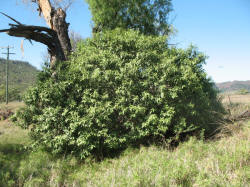
On the Central Highlands, AxeGapper is usually found on decomposed sandstone country like the
Minerva Range/Springsure mountains area. Closely related to common Wilga but
quite different in habit, the tree is most often seen in the form of a spreading
shrub like the pictures here but in the right conditions, it eventually takes on an erect habit. The
tree is spread by birds that eat it's fruit so it is often found growing close to the base of a larger
tree.
|
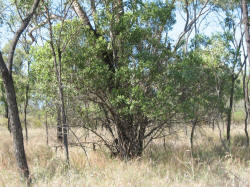
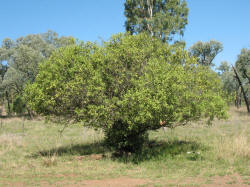
|
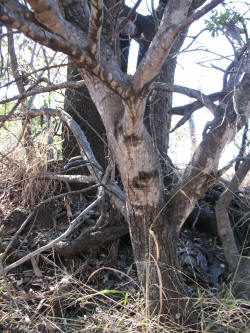
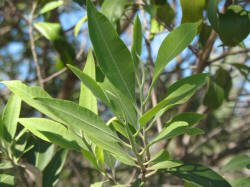
The largest trunk diameter I have seen in our region is about 180mm and there is not much
length in them but the tree is known to grow to 25 metres high with 750mm diameter trunks in the
rainforest along the coast.
|
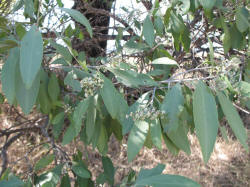
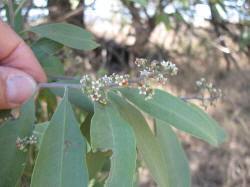
|
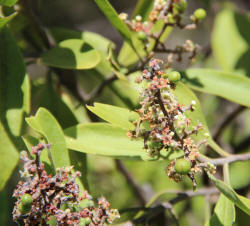
AxeGapper flowers around September to November and the fruit follow through to about April.
The fruit/seeds are eaten by several bird species but I'm told they are not suitable for human consumption.
|
|
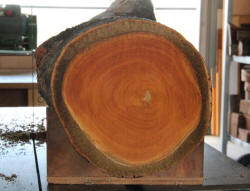
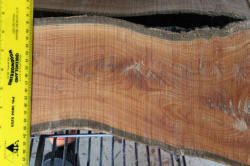 AxeGapper timber is indistinguishable from that of common Wilga (Geijera parviflora) but the
bark is much thicker and is very dark. I had originally attributed the dark colour of the inner bark
of the pictured example to a reaction to the poison that had been injected into the tree but
have since learned that the inner bark is known to be quite dark.
AxeGapper timber is indistinguishable from that of common Wilga (Geijera parviflora) but the
bark is much thicker and is very dark. I had originally attributed the dark colour of the inner bark
of the pictured example to a reaction to the poison that had been injected into the tree but
have since learned that the inner bark is known to be quite dark.
|
|
|
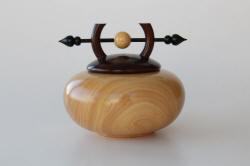
I found AxeGapper timber quite stable while drying and just like common Wilga,
it is very nice to turn, machine, sand and finish - no complaints with this timber at all!
This lidded box made from AxeGapper found it's way to Blackwater's sister city in Japan.
For the lid I used Gidgee, the rod is
Australian Ebony and the ball is of
Sandpaper Fig.
|
|
|
|